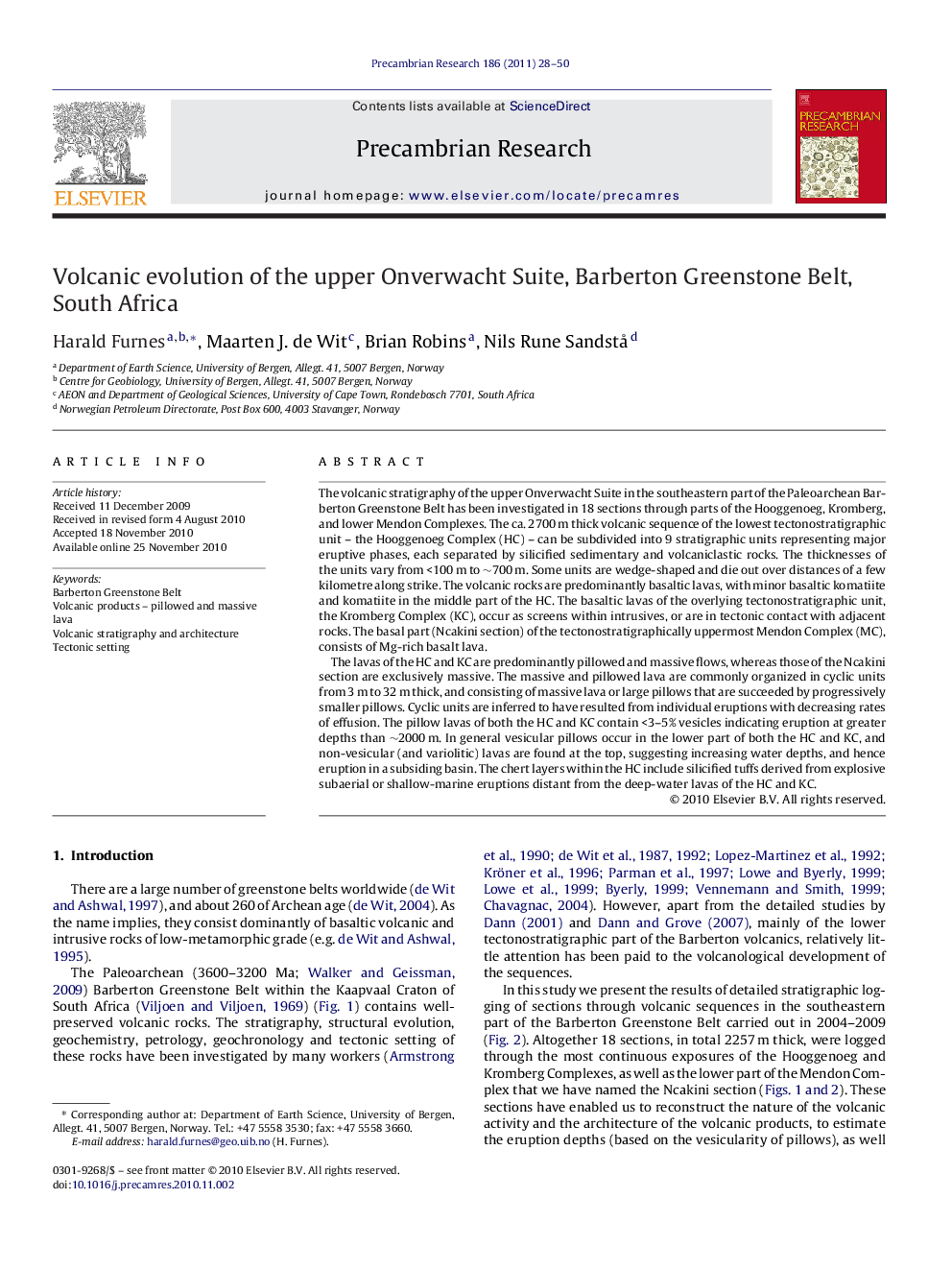| Article ID | Journal | Published Year | Pages | File Type |
|---|---|---|---|---|
| 6442419 | Precambrian Research | 2011 | 23 Pages |
Abstract
The lavas of the HC and KC are predominantly pillowed and massive flows, whereas those of the Ncakini section are exclusively massive. The massive and pillowed lava are commonly organized in cyclic units from 3Â m to 32Â m thick, and consisting of massive lava or large pillows that are succeeded by progressively smaller pillows. Cyclic units are inferred to have resulted from individual eruptions with decreasing rates of effusion. The pillow lavas of both the HC and KC contain <3-5% vesicles indicating eruption at greater depths than â¼2000Â m. In general vesicular pillows occur in the lower part of both the HC and KC, and non-vesicular (and variolitic) lavas are found at the top, suggesting increasing water depths, and hence eruption in a subsiding basin. The chert layers within the HC include silicified tuffs derived from explosive subaerial or shallow-marine eruptions distant from the deep-water lavas of the HC and KC.
Related Topics
Physical Sciences and Engineering
Earth and Planetary Sciences
Geochemistry and Petrology
Authors
Harald Furnes, Maarten J. de Wit, Brian Robins, Nils Rune Sandstå,
